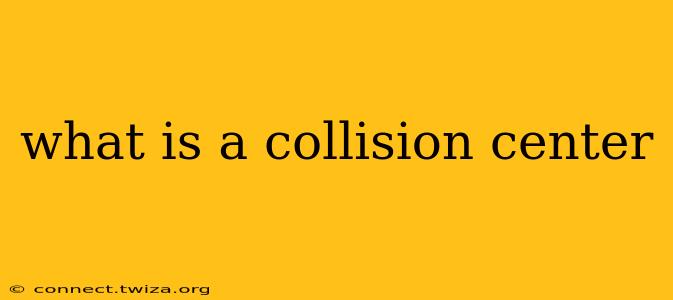A collision center, also known as an auto body repair shop, is a specialized facility dedicated to repairing vehicles damaged in accidents. These centers go far beyond a simple dent repair; they handle everything from minor scratches to extensive structural damage, restoring vehicles to their pre-accident condition. This involves a complex process requiring skilled technicians and specialized equipment.
What Services Do Collision Centers Offer?
Collision centers offer a wide array of services, including but not limited to:
- Damage Assessment: A thorough inspection of the vehicle to determine the extent of the damage, identifying hidden problems and planning the repair strategy.
- Parts Ordering: Sourcing original equipment manufacturer (OEM) parts or high-quality aftermarket replacements, ensuring proper fit and function.
- Body Repair: This is the core of the operation, involving straightening bent metal, replacing damaged panels, and repairing structural components. Techniques may include welding, pulling, and panel beating.
- Paint Repair: Precise color matching and application of paint, using advanced techniques to ensure a seamless finish. This often involves meticulous preparation, including sanding and priming.
- Mechanical Repair: Addressing any mechanical damage caused by the collision, such as engine, transmission, or suspension issues.
- Electrical Repair: Repairing or replacing damaged electrical components, such as wiring harnesses, lights, and sensors.
- Detailing: Giving the repaired vehicle a thorough cleaning and detailing to restore its appearance to pre-accident condition.
How Does a Collision Center Differ From a Regular Mechanic?
While a regular mechanic handles routine maintenance and repairs, a collision center focuses specifically on accident damage repair. They possess specialized tools, training, and expertise in areas like structural repair, paintless dent removal, and frame straightening, which are typically beyond the scope of a standard auto repair shop. They also often work with insurance companies to handle claims and facilitate the repair process.
What are the Different Types of Collision Centers?
Collision centers vary in size, specialization, and the services offered. Some may focus on specific vehicle types (e.g., luxury cars, trucks), while others are general repair shops. Larger centers might have dedicated departments for various aspects of the repair process, improving efficiency and expertise.
What is the Repair Process Like at a Collision Center?
The repair process generally follows these steps:
- Initial Assessment and Estimate: A detailed inspection is performed to determine the extent of the damage and an estimate is provided.
- Insurance Claim Handling (if applicable): The center often works with insurance companies to manage the claims process.
- Disassembly: Damaged parts are carefully removed to access and repair underlying components.
- Repair and Reassembly: Damaged parts are repaired or replaced, and the vehicle is reassembled.
- Painting and Finishing: The vehicle is painted and detailed to restore its original appearance.
- Quality Control Inspection: A final inspection is performed to ensure that the repairs meet safety and quality standards.
How Do I Choose a Good Collision Center?
Choosing a reputable collision center is crucial. Consider these factors:
- Certifications and Accreditations: Look for certifications from organizations like I-CAR (Inter-Industry Conference on Auto Collision Repair).
- Customer Reviews and Testimonials: Read online reviews to gauge customer satisfaction.
- Insurance Company Relationships: A strong relationship with insurance companies can streamline the claims process.
- Warranty: Inquire about the warranty offered on repairs.
By understanding the services, process, and factors to consider when choosing a collision center, you can ensure your vehicle is repaired to the highest standards following an accident.
